Reuniting the Parthenon Sculptures: A New Chapter in...
Renewed negotiations, shifting public opinion and...
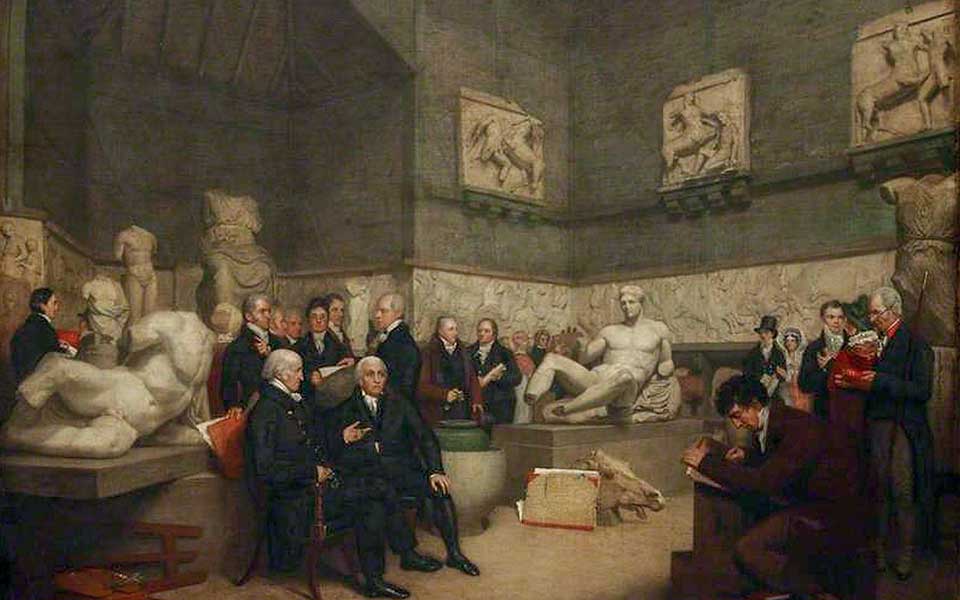
An 1819 painting by Archibald Archer showing the Temporary Elgin
Room and staff members, a trustee and visitors at the British Museum.
© The Trustees of the British Museum
It was not your typical breakfast meeting. Sir Anthony Carlisle, a surgeon and prominent member of London’s elite, had planned a surprise for his all-male, art-loving toffish guests in June 1808, taking them to a room where boxing champion Bob Gregson stood positioned like an exhibit. Ten days later, the same group was invited to a shed used by Lord Elgin where they could admire the pugilist’s form again, this time next to the Parthenon sculptures.
A few weeks later, that same shed was used to host a boxing match between top British pugilists set against the marble sculptures, an event that was described as the “perfect match between nature and art.”
These vignettes appear in the diary of Joseph Farington, a regular visitor to the makeshift exhibition space created by Lord Elgin, which he described as being too cold in the winter and too hot in the summer.
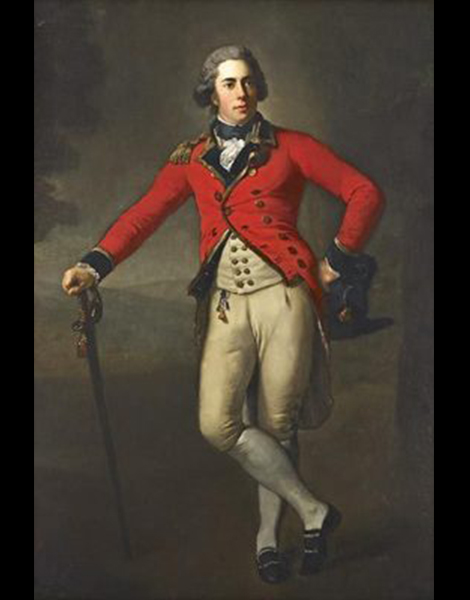
Thomas Bruce, the 7th Earl of Elgin, by Anton Graff, circa 1788.
© Alamy / visualhellas.gr
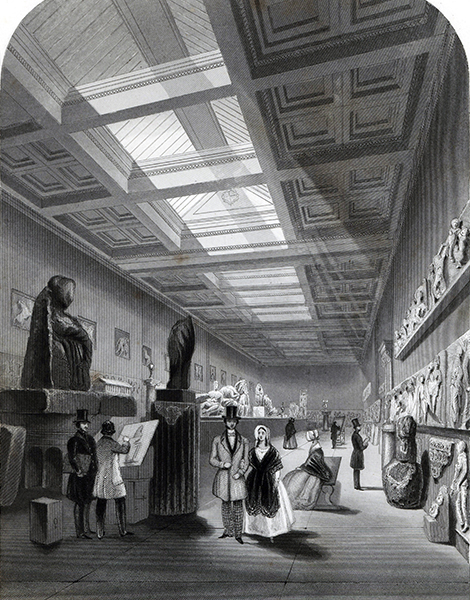
An original steel engraving drawn by Llewellyn Jewitt and rendered by William Radclyffe, 1841, depicting the Elgin Marbles Room in the British Museum.
© AFP / visualhellas.gr
Fiona Greenland, an associate professor of sociology at the University of Virginia, has studied Farington’s diary, along with British Museum records and more than 1,000 newspaper publications from the early 19th century, to explore how London’s elite, but also people outside this circle, gradually came to regard the Parthenon Marbles as symbols of “Britishness.”
“Ι was really puzzled by the question of how something made in Greece by Greek people was integrated into British national identity. How did that happen? Usually, we are taught that nationalism focuses and takes pride in homegrown creations; it attempts to exclude foreign people and their creations,” Greenland says.
She believes that the placement of naked or half-naked athletes – boxing was incredibly popular among the upper classes at the time – among ancient Greek sculptures was not unwitting or merely a way of advertising the marbles.
“To me, it’s obvious that there was a very intimate physical comparison between the British athletes and the statues of Greek men. I think Elgin and his associates were very conscious of trying to integrate the sculptures into the British mentality,” Greenland notes.
As she writes in a paper on the subject, Elgin appears to have been making a concerted effort to convince his audience that Britain was the natural setting for the looted sculptures. “If the naked pugilists looked just like the mounted Greek warriors in the frieze, then Britons could mount a claim to embody the legacy of ancient Athens,” she argues.
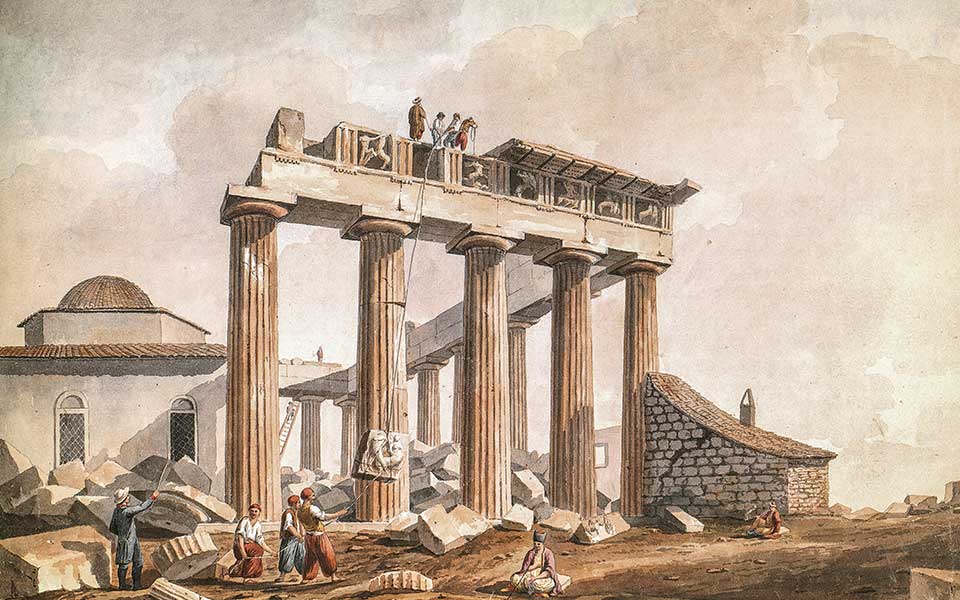
A watercolor from the book “In Search of Greece: Catalogue of An Exhibit of Drawings at the British Museum by Edward Dodwell and Simone Pomardi from the Collection of the Packard Humanities Institutes,” 2013.
We are still determining how many people in the UK continue to believe that the Parthenon Marbles are a part of the British national identity and heritage, and how decisive this could be in shaping their stance and position in the ongoing controversy. Last March, however, the influential, London-based conservative think tank Policy Exchange published a 63-page analysis on the issue of the Parthenon Sculptures, written by Sir Noel Malcolm. The journalist, historian and academic argues against the marbles’ return to Greece, saying that “the claim that Greek identity is essentially harmed by their absence from Greece is greatly exaggerated.” He also claims that “over more than 200 years, they have become part of Britain’s cultural heritage.”
Greenland notes a shift in public opinion in recent years, with polls showing that most Britons favor returning the sculptures to Greece. She also, however, points to the reactions of Britons who are opposed.
“If you look at the rhetoric against restitution in the UK, you will see people using the phrase ‘losing its marbles’ or ‘losing the marbles.’ So, for some people, restitution is a weakness; a political weakness. It signals capitulation, perhaps a lack of loyalty to the British nation or the British Museum. In Britain, those who might wish to support restitution are faced with accusations of political weakness and disloyalty, which might be very difficult to overcome, particularly for people seeking elective office,” she says.
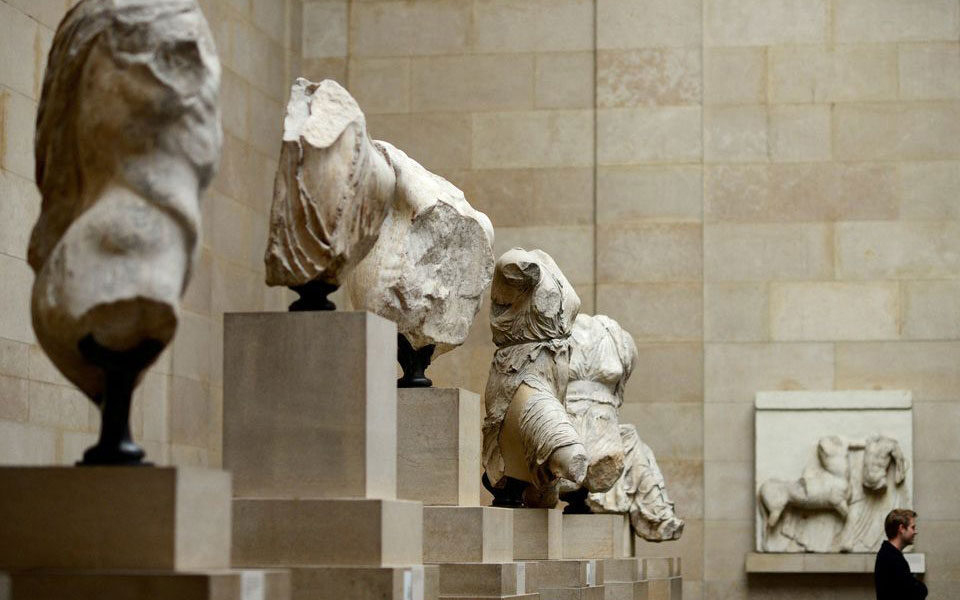
Parthenon marbles on display at the British Museum in London.
© Reuters
Richard Hingley, professor emeritus of Roman archaeology at the University of Durham, notes that approaches to antiquity that can be traced several centuries back often constitute an effort to appropriate the past of others. He says that something similar happened in Britain with Rome.
“Classical Greece and classical Rome were so admired in Britain that people tried to find a connection. In the late 19th to the early 20th century, people were using that classical past very directly to justify what the British were doing in their empire,” he says. However, he adds, “I think a lot of people in Britain think that the British Empire is over, and we live in a different world.”
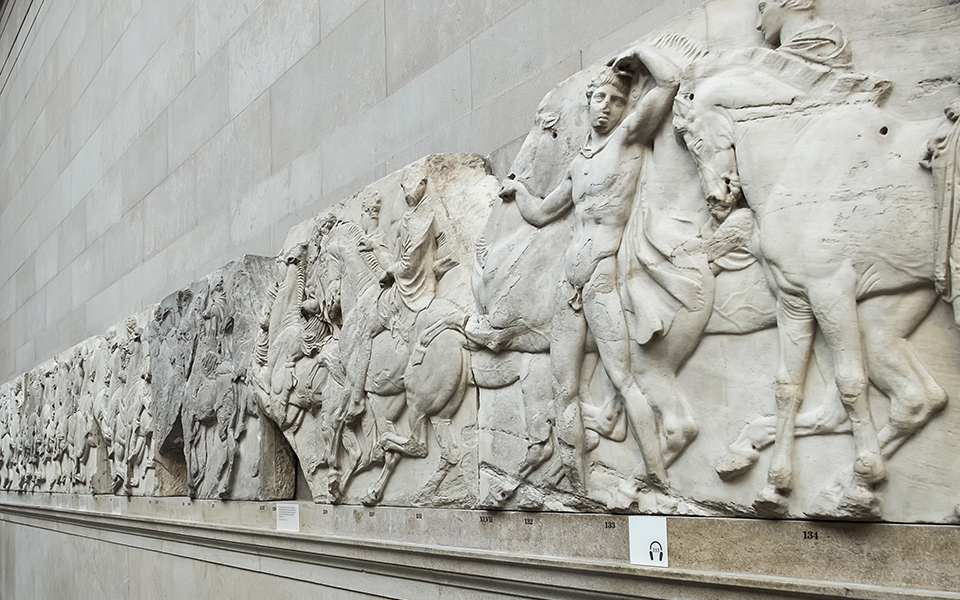
Half of the surviving Parthenon Marbles have been on display in the British Museum since 1817.
© Shutterstock
In her 2012 paper “The Parthenon Marbles as Icons of Nationalism in 19th-century Britain,” Greenland notes that Elgin and his network of acquaintances among the higher echelons of British society launched an informal public relations campaign to promote the Parthenon Sculptures before these ended up at the British Museum. They wrote letters to newspapers lauding their aesthetic qualities, while politicians warned of the risk of these classical art masterpieces ending up in foreign collectors’ hands.
As she notes, a supranational narrative was formed over time, which suggested that the marbles belong to everyone, while at the same time arguing that ancient Athens was a lost utopia that had no connection with modern Greece. According to this line of thinking, endowing these antiquities with a universal character was a way of justifying their continued removal from Greece. Another element that may have contributed to this approach, Greenfield argues, may have been the color of the marbles. Even though they were not white in ancient times, the white patina they acquired over time, the monochromy, “makes it easier to project our own selves onto it.”
White marble can be read as white people – British white, as Elgin and his circle saw it,” she argues.
Renewed negotiations, shifting public opinion and...